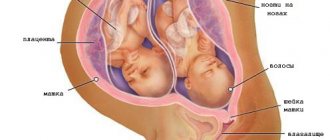How many times a day should you feed your baby?
The optimal solution would be a 5 meals a day diet:
- For breakfast, feed your baby breast milk or formula.
- For second breakfast, give porridge with half an yolk, fruit puree and juice.
- Lunch is the highest calorie meal. It should contain vegetable puree, meat and bread. If the child asks for more food, you can offer fruit juice for dessert.
- Kefir, cottage cheese and fruit puree are suitable for an afternoon snack.
- Before bedtime, breastfeed or an adapted formula.
ATTENTION! Meals should be strictly fixed in time in order to develop eating discipline in the child. This promotes better digestion, and the baby eats more willingly and does not resist.
As the child becomes older, it is necessary to slowly increase the time of the first feeding, thereby moving the breakfast time from 6:00 to 8:00.
Example of a child's diet at 11 months
Breakfast (7am):
- buckwheat porridge with butter (150 g);
- fruit puree (50 g).
Lunch (12 hours):
- zucchini puree (150 g);
- steamed meat or fish cutlet (60 g);
- soup with meatballs (100 g);
- compote (50 g).
Afternoon snack (16 hours):
- 150 g kefir with cookies;
- children's cottage cheese (50 g);
Dinner (20 hours);
- 100 g steam omelette;
- 100 g kefir;
- banana (50 g).
Before bedtime, and also during the day, if necessary, you can give your baby breast milk.
What and how much should a child eat?
Mothers have many questions: what should a child’s menu contain at 11 months, what to feed and what to exclude from the diet, how to gradually accustom the baby to adult food. It is important not to overdo it: the main components of the menu remain the same, only their quantity changes, and meat dishes are served in a more adult form.
The baby still needs breastfeeding. Optimally - 400 milliliters per day, 200 in the morning and before bed. The menu for a bottle-fed 11-month-old child differs only in the use of formula instead of mother's milk, and the quantity remains the same.
The following must be present: vegetable puree - 200 grams, fruit puree - in two doses of 50 grams each, as well as fruit juice - approximately 50 milliliters.
IMPORTANT! You should not give tangerine, orange, tomato, grape, strawberry, or raspberry juices - they are highly acidic. Children's apple juices with apricot, peach, plum and black currant are best suited.
Porridges occupy an important place. A sufficient amount is 200 grams. Buckwheat, rice, and corn porridges with milk are suitable - they are the least allergenic. Introduce oatmeal with caution. It is better to refrain from wheat options.
A child's diet at 11 months should include half a yolk, and it is convenient to add it to porridge, supplemented with slices of banana or apple.
Meat is the most valuable source of animal protein. For a child 11 months old, 70 grams per day will be enough. It is advisable to use turkey and rabbit meat; beef and veal are suitable.
Try introducing chicken liver. At this age, there is no need to puree meat. You can mash it with a fork or separate it into fibers. To gradually accustom your child to adult food, it would be correct to make cutlets or meatballs from meat. A suitable cooking method is steaming.
River fish with white meat is an excellent addition to your diet. However, you should be careful - fish quite often causes allergic reactions. If the child tolerates it normally, be sure to include it in the diet. Like meat, it is better to chop fish moderately or make cutlets. The daily norm is 60 grams.
It is necessary to give the child kefir (150 milliliters) and cottage cheese (40-50 grams). Take low-fat kefir, and only children's cottage cheese. It is better to prepare it at home with milk.
At 11 months, you can pamper your baby with baby cookies. Offer in moderation, no more than 10-12 grams per day.
What and how to feed the baby?
If the child does not have food allergies, and the pediatrician prescribed a standard complementary feeding regimen, then, most likely, the baby has already become familiar with vegetables and fruits, cereals, meat and fish puree, cottage cheese, yolk and kefir. Moreover, he already eats some foods in small pieces.
With patient parents, by this time the baby himself drinks from a cup and holds a spoon, although not always directly into the mouth.
Night feedings
If the daily routine is set up correctly, then the baby no longer wakes up at night. But even if this happens, no food is given at this time. Leftover food in the mouth is a direct path to caries. If the child is hungry at night, you need to feed him more in the evening. You can offer a snack just before bed, then you will be sure that the child is full, and his desire to eat is just a whim or a desire to stay with his mother’s breast longer.
Drink
By 11 months, a child can drink up to half a glass of fruit juice. Do not exceed this amount - the juice contains a lot of sugar, which can lead to the development of caries. Give preference to decoctions of dried fruits, freshly brewed compotes, fruit drinks and plain water. In the afternoon, children's herbal tea will be appropriate.
Daily diet
Parents often ask how much a child should eat at this age. Many people think that the baby has a poor appetite. It is believed that the average serving weight should be 200 g. This includes all food eaten at one time, including breast milk or breast milk if you are feeding your baby after the main meal. This figure is very approximate; if the baby refuses to finish his portion, do not insist.
The Union of Pediatricians of Russia reminds that force-feeding leads to nausea, vomiting or problems with stool, and the child may begin to have a negative attitude towards this food or the process of eating itself.
Basic nutrition rules
Most of the principles of the diet are already familiar to mothers from the moment complementary feeding is introduced. However, it is at this age that many parents make common mistakes because they consider the child to be an adult. This is fraught with problems with the gastrointestinal tract and developmental disorders.
To avoid this, you need to follow 5 simple rules:
- You should not include highly allergenic foods in your diet: sauerkraut, chocolate, cocoa, whole cow's milk, mushrooms, honey, ham.
- Don't give fried food! Prepare food only by stewing, boiling or steaming.
- Do not add spices, salt, sugar.
- Don't force your child to eat something he doesn't like. We need to find another dish.
- The last rule takes into account the peculiarity of age: there is no need to grind all the food to a puree. The child already has teeth, and therefore he is able to eat tougher foods.
These rules are the basis of the diet. Only following them will help you create a complete and safe menu.
How to tell if your breastfed baby is eating enough
It would seem that there is nothing simpler: put the baby on the breast as he asks, let him eat as much as he wants - and that’s all. In fact, it's not that simple.
Breastfeeding has its challenges and challenges.
- Some children love to breastfeed , and if the mother puts the baby to the breast every time, as soon as the baby cries and there is enough milk in the breast, then overfeeding results: the baby eats often and erratically, the milk does not have time to evacuate from the stomach to the intestines, this leads to constant fullness of the stomach, its stretching, the child begins to spit up, intestinal colic and diarrhea appear, the child screams and worries even more, and the mother again soothes him with her breasts.
- Sometimes the mother has little milk, the baby is hungry, but he does not have the strength to cry and ask for the breast . He sleeps a lot and sucks rarely and little, which causes even less milk, and mothers do not always immediately notice that the child is not gaining weight. As a result, if you do not start supplementing your child with formula in a timely manner, some children develop malnutrition.
- The mother has little milk , the baby cries all the time and demands the breast, the mother constantly feeds the baby all the time. The baby gets used to sucking continuously and begins to roar as soon as they try to tear him away from the breast. Mom hopes that as a result of such frequent sucking, lactation will improve, but since she does not have the opportunity to eat calmly, drink a lot, or have a good rest, she is so exhausted that not only does the milk not increase, on the contrary, it may disappear completely . In such a situation, additional feeding is required.
As follows from the above, when breastfeeding, both overfeeding and underfeeding are possible .
Mothers are usually especially worried if they assume that there is little milk and the baby is not getting enough.
Children's menu by day
To make the task easier for mothers, below is the menu for an 11-month-old breastfed or bottle-fed baby. The table contains explanations on how to diversify your diet throughout the week.
| Reception | Food |
| 1 breakfast (6:00) | Breast milk/adapted formula. |
| 2 breakfast (10:00) | Definitely porridge. Give buckwheat up to 4 times a week, preferably 2-3 times. On other days, feed rice, oatmeal, and corn porridge if there are no signs of allergy. About 3 times a week add 1⁄2 yolks to the porridge. More is possible if the child accepts such food normally. For dessert - fruit puree and juice. |
| Lunch (14:00) | The main dish is meat or fish. Prepare meatballs and cutlets from them. A couple of times you can serve the meat as a coarse puree (do not cut it too finely) or as a soup. Fish - 2 times a week. Vegetables are a must for lunch. You can make puree, casserole or soup from them. Give bread. To drink - fruit juice or compote. |
| Afternoon tea (18:00) | Feed with kefir and cottage cheese, you can bake casseroles. For dessert - fruit puree with dried fruit or children's cookies. |
| Dinner (22:00) | Breast milk/adapted formula |
The menu is general. It needs to be adjusted taking into account the characteristics and preferences of the child. The only condition is that the child must eat in moderation. It should not be overfed or underfed.
What should you eat if you have a gastrointestinal disorder?
Diarrhea indicates gastrointestinal pathologies. What to do in this case? During diarrhea, it is better to take six-hour breaks from eating, giving water or breast milk. Since the body of an 11-month-old baby cannot cope with dehydration on its own, the baby should be put to the breast as often as possible. After the doctor arrives, you need to coordinate with him the use of sorbents: they absorb all toxic substances. Sometimes doctors prescribe Regidron, which restores the water and electrolyte balance of the body. Afterwards, the baby should eat low-fat foods in small portions.
A special diet for diarrhea includes buckwheat porridge, rice and low-fat kefir. Meat products during the recovery period, as well as fruits, should not be given. But if diarrhea does not go away within 2 days, you should get tested for intestinal dysbiosis. Drinking fluids is the main condition for the baby’s recovery.
Delicious dishes
If a child refuses to eat a particular dish for no apparent reason, you need to try preparing it differently. Several interesting and quick recipes will help here.
Turkey meatballs
- Take 100 grams of turkey, 2 tablespoons of milk, 1 teaspoon of butter, 1 teaspoon of semolina.
- Scroll the turkey through a meat grinder into the minced meat.
- Melt the butter, add to the minced meat along with semolina, stir, leave for 20 minutes.
- Pour water into the pan, bring to a partial boil.
- Using a spoon, place the meatballs into the water and cook for 9-11 minutes.
Omelet with vegetables in a double boiler
- Prepare 4 chicken eggs, 3 tablespoons of water, 1 potato, 1 carrot.
- Wash, peel, finely chop the vegetables, place on the bottom of the steamer.
- Mix eggs with water and pour mixture over vegetables.
- Cook in a double boiler for 20 minutes.
- Stir the mixture and leave for another 7-8 minutes.
Zucchini stew
- Take a leaf of a head of white cabbage, 1 potato and 50-70 grams of zucchini.
- Wash the potatoes, peel them and cut them into cubes.
- Place the cabbage leaf and potatoes in a saucepan and add 90-110 milliliters of water.
- Simmer over low heat for 30 minutes.
- Cut the zucchini into cubes, add to the rest of the vegetables and simmer for another 15 minutes.
- Pass through a sieve, add a teaspoon of vegetable oil.
These rules and recipes will help make your child’s menu healthy, safe and tasty. Only a painstaking and competent approach to formulating a diet will help babies receive all the necessary nutrients and ensure healthy, full development.
Feeding norm for a newborn
During the first days, it is recommended to breastfeed the baby every hour, then on demand. When a baby is breastfed, everything is much simpler. Mom doesn’t have to count how much milk he ate. The amount eaten changes with each feeding and depends on the needs of the baby. How much a newborn eats, he determines himself, and releases the mother’s breast when he is full.
According to expert recommendations, you should hold your baby on your chest for no more than 20 minutes. For some children, 10 minutes is enough, while others need a little longer. By looking closely at the baby, you will understand how much time he needs. By 2 months, the baby will already have his own routine.
As a rule, babies under 6 months burp after feeding. This releases air and excess milk. The reason for this is the sphincter (flap) between the stomach and the esophagus, which is still poorly developed, and if the baby overeats, he can vomit not only the excess, but also everything he has just eaten.
After some time, the baby will be hungry again and will ask for food again. Don't be surprised, this is completely normal, because his stomach is empty.
It is important for the mother to try not to overfeed the baby. This applies to a greater extent to formula-fed babies. Therefore, it is useful for every new mother to know how much a newborn should eat at one feeding.











